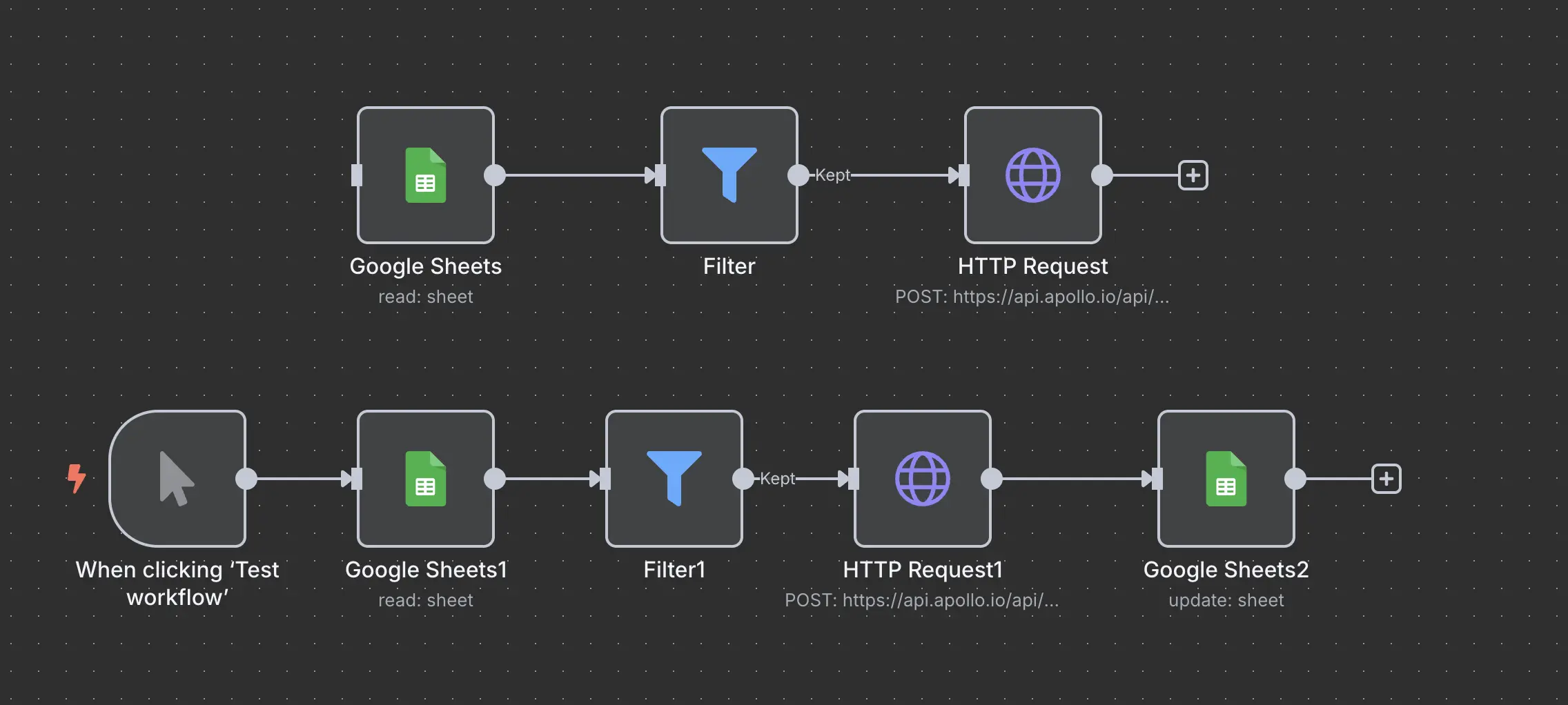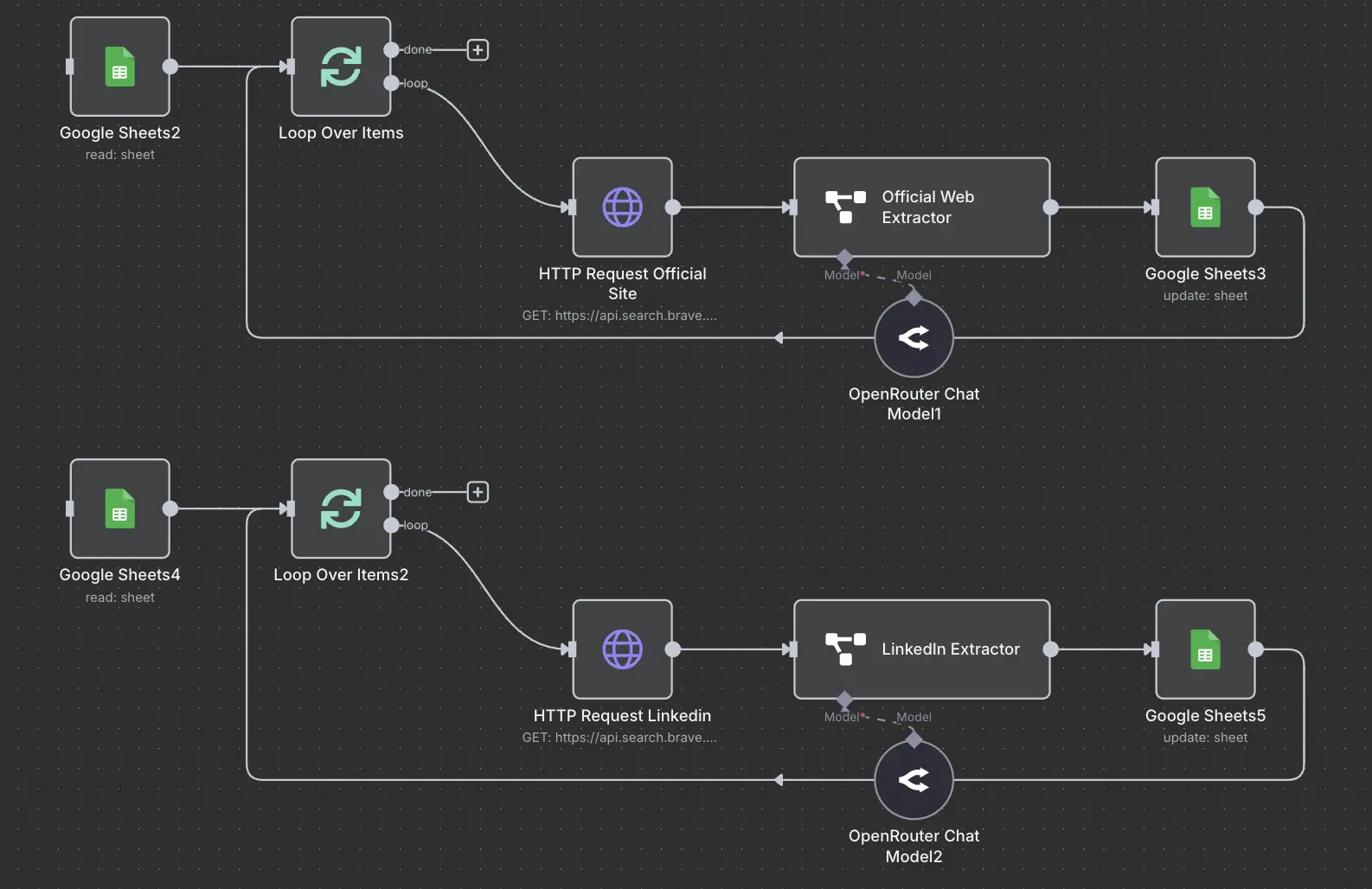
Start Automate Your Boring & Time-consuming Task
Automate repetitive workflows and boring tasks in your life
These past few years, AI (LLM) already there almost in every aspects of our life. You want to quick search something, instead of using google, maybe some of us are using ChatGPT or Gemini instead.
“explain what is llm for 12 years old kid” “how does webhook work? can you use real world analogy to simulate how webhook works ”
More advanced usecase, sometimes we want to quick research stuff such as comparation between X and Y with its pros and cons or gather bunch of scientific journals & research papers about how beneficial is creatine 10g per day using deep search feature of ChatGPT. Some of us use LLM to fully-generate their own thesis or literature paper for assignment. These powerful text and image generation by current model make automation more powerful than before. You can even enable more powerful automation with agentic power from LLM itself.
As you can see there is AI slops AI-generated content everywhere on the internet. You open LinkedIn, the first thing you see…
UNPOPULAR OPINION:
Failure isn’t the opposite of success.
Failure IS success.
Success is just failure that kept going.
Going is just success that failed to stop.
Stopping is just going in reverse.
Reverse is just forward with extra steps.Mind = BLOWN 🤯
Tag someone who needs to see this PARADIGM SHIFT!
#Failure #Success #Mindset #Philosophy #DeepThoughts #Inspiration
Then you open Instagram, this is the first reel do you see which is… AI slop.
You have enough of this, you open Tiktok, there is AI-generated brainrot everytime you scroll it. It’s over, every corner of you see on the internet is AI slops. Blog content from google search, Instagram reels, Tiktok videos, etc. Even though I was writing this blog and my thought manually, Im still using AI to assist my writing especially Im suck at writing and there is too many grammatical error too. But you get the idea, you can automate this whole mass AI-generated content automation workflow, schedule it to post on Instagram, LinkedIn, and Tiktok easily right now. You just need tools to generate post (LLM API), generate video (ex: VEO 3), maybe AI voice too (ex: ElevenLabs) then glue it into your automation workflow (in this blog we will use n8n).
On serious note, with current AI tech, we can build many automation workflow with A tech integrated that I could list as much as I can, especially for biz:
- automated invoicing and payment reminder
- automated demo booking followups
- server setup (devops)
- log & error monitoring
- personalized news aggregator
- document summarizer
- ai chatbot with google meeting & google calendar tool
- the list goes on…
At my current job, I integrated AI automation workflow using n8n successfully on SEO division. I n8n-pilled almost entire SEO team at my company for their daily workflow. They are non-technical (non-technical means not touching code) but quite tech-savvy to understand the tool. There was a time when my coworker was frustrated a lot because self-hosted n8n was down. That’s how important n8n is on SEO team now. Performance wise, since they are using n8n, both their productivity and outputs are increased a lot. More tasks get done in less time while our company website and client website traffics is increased a lot.
For SEO, automation workflow not only used for content generation/writing only. You can use it to analyze competitor blog content, automated keyword research, multi-page generation, running technical SEO audit with AI analysis, etc. There is a lot of you can automate in SEO task to save your time.
Alright, enough of n8n glazing and hyperbole of automation. In this blog, I want to share my learning journey and experience of using n8n to automate my own assignment, task, or whatever it is then start applying it into my workflow too.
Using n8n (Non-tech friendly)
n8n is open source zapier/make dot com alternative tool to make automation workflow. You might heard n8n several times either from social media like LinkedIn or X (usually they are posting n8n template for engagement bait). I use n8n here as example because it is open source, which is give me more control, more customizable, flexibility, and self-hostable so I could save a lot of money by self-host it by myself on my own server with full controll. The second biggest thing why Im using n8n here because of its massive community. You can check their reddit community on r/n8n which is one of biggest communities in reddit and if you are confused about n8n or maybe need some n8n workflow ideas, you can crawl on their reddit community or ask on there. Beside reddit, it has community in facebook, X community, also several people such as software developer and marketer are using n8n too (based on my LinkedIn feed lol).
The initial setup and configuration of n8n for non-technical people may sounds confusing especially self-hosting part.
Self-hosting Setup
Basically, you self-host n8n via docker compose as you can read more details in their docs. Self-hosting n8n requires technical knowledges such as:
- Setting up and configuring servers
- Managing application resources & scaling it
- Securing server and applications (n8n)
- Configuring n8n itself
What i mentioned could be expanded to:
- Choosing server (VPS or cloud), tools and dependencies on your server including databases, knowing what container (docker) is, and basic sysadmin knowledge, etc.
- Set up SSL for secure connection, do some security audit to identify security risk on both your server and application, setting up user auth & credential, etc.
- Setting up monitoring for your own server and n8n instance also configure log collection.
The list could goes on, if you are still interested about self-hosting, I covered the blog dedicated to (should be) beginner-friendly self-hosting setup I used with container approach you can read here
As it is kind of (a bit) time consuming to write docker compose yml configuration from scratch, here is n8n self-hosting templates that you can directly docker compose on it (I’ll update the list if I found another n8n docker compose template):
You can also ask Gemini or Claude to make customized n8n docker compose yaml file for yourself but you need to verify whats written there and quite technically knowledgeable as LLM still hallucinate a lot and may generate misconfigured/incomplete yml file.
Anatomy of n8n
We can breakdown n8n components into three components:
- Canvas, whole board where you visually map out your automation logic. You can also add sticky note as your automation workflow documentation on there.
- Nodes, the lego bricks of n8n. Nodes can be divided into several types:
- Trigger node as starting point of your automation workflow. There is several trigger nodes you can select based on your need. You can trigger the start of workflow manually, run the workflow when something happens in an app like Airtable or Telegram, triggered on a schedule (basically cronjob), triggered via webhook, etc.
- Core node, literally basic node that usually used in automation such as HTTP request/API call, webhook, running custom code, execute command, wait/delay node, etc.
- Flow node, type of node to do some control structures aka statement that manage the flow of automation such as for loop, if else statement, branching, filtering, etc.
- Data transformation node to manipulate, filter, or convert data such as filtering data, editing data, removing data duplicates, etc
- AI node, think this is their newest node which is used for LLM/AI integration such as OpenAI/Gemini model node, AI Agent node, and LLM Chain (LangChain) node
- App node, used to integrate external app into your n8n workflow such as google sheet, notion, salesforce, discord, etc.
- Connections which is line that connect your nodes.
Actually these app node can be replaced easily with custom HTTP request node (literally API integration) even though n8n already provides hundreds of prebuilt integrations. HTTP request node lets you connect to any services with REST API. Meanwhile existing prebuilt app node such as salesforce, jira, and slack node is useful for non-technical user as it abstract away the complexity of authentication and API structures.
Workflow Examples
There is plenty workflow you can do and as I’m too lazy to provide detailed workflow examples, you see many n8n automation templates depend on your need in their official template page. You can pretty much recreate zapier or make dot com automation in n8n. You can also get the idea from bunch of n8n videos on youtube made by some typical “AI” influencer that also happen to run AI automation agency (no offense, just stereotyping) also I already mentioned few examples before in intro section.
1. Sales & Marketing Automation
Lead Generation & Enrichment
With n8n, you can make end to end lead generation pipeline such as from scraping raw data —> processing raw data & transform the data (ETL) —> google sheet (update row) node to give bizdev or SDR (sales development representative) leads to be reached out.

Here is visualization and example of workflow of simple lead generation using apollo API and append lead data directly into google sheet. With this workflow, you trigger the workflow manually by clicking the button then we read our working sheet first on google sheet to know the sheet structure (columns, rows, values, etc) in our current working google sheet then we send/post HTTP request to apollo API endpoint to get the leads data from apollo. After we get the output from API call request of apollo, we can pass the json variable such as first_name, last_name, linkedin_url, email, etc. into google sheet rows in declared column. As raw json output from apollo API already parsed into drag-able object in n8n, you can drag & drop json values directly into column field to update google sheet rows.

By try the node one by one, you will know the input, output, and structure of your node including google sheet read sheet node, HTTP request node, and google sheet update row as shown in the image above. You can directly pass the input from previous node to next parameter fields of node such as passing google sheet column values (from google sheet node) into HTTP request node for query purpose.
You can also do lead enrichment automation on n8n. In this workflow below, I used brave search API to search & find a value that need to be enriched within loop (per row). You can use other search API such as exa or even combine both of APIs for it (more expensive cost). Then the json data from brave API passed into “Information Extractor” node which is used to extract information from text (in this case, its json output of brave search and the result of LLM) into a structured format (json) in loop (per row). Thus, with consistent output from information extractor node, we can pass the output consistently into google sheet rows.


With HTTP request node, you can literally fetch any API you want for lead generation or lead enrichment such as firecrawl, apify, and hunter.io. Then put gathered leads data into google sheet, airtable, or notion. Even as SQL database such as PostgreSQL. So the limit is your creativity & design thinking of how you envision the n8n workflow would be like.
Sales Pipeline
In sales division, managing sales process and its pipeline are kind of tiresome. SDR need to adjust deal stage manually, update current leads status manually, etc. Its kind of suck and manually time-consuming to do that, they are better focusing on sales process instead of doing that operational side on sales pipeline. This is where automation workflow come handy.
As popular CRM such as salesforce and hubspot are available on n8n, you can play around to optimize the sales process using n8n. For example;
deal moves to new stage—>CRM webhook triggered—>from webhook, new update email triggered to the prospectlead expresses interest—>send email to lead with a calendar link for book a meeting—>automatically add book meetings to your calendar via google calendar node- follow-up automation on proposal or quotation/invoice
Other …
Well there is a lot of you can do on sales/marketing automation side, its up to your creativity & system thinking including on customer engagement & retention, email automation, webinar/event promotion, tracking leads from utm source, etc.
2. Social Media
As stated in the early paragraph, in the age of generative AI, this domain shines if you combined AI with automation workflow as you can see there is AI slops everywhere. I won’t go in detail here as I’m not really using n8n for social media one. But here is idea:
- Automate content publishing, such as using google sheet for content calendar then scheduled post to different platforms at the right time using branching node.
- Automate blog post sharing to social medias,
when new blog post published—>triggered RSS/CMS webhook—>n8n automatically share blog post with AI-generated caption using AI agent node with blog post url - Social media sentiment analysis,
collect comments, mentions, or hashtags—>analyze sentiment using LLM/AI API—>flag negative feedback for review - Weekly/monthly performance reporting,
fetch analytics data (likes, comments, shares)—>send a summary report to team either using telegram, slack, or email - Content curation,
monitor twitter trends or reddit hot topics—>send daily digests to team
3. Finance & Accounting
Actually few finance & accounting tasks could be fully automated such as simple bookkeeping or even you can automate your personal finance (aggregate personal expenses into sheet or something like that). Here is few example:
- invoice processing,
parse incoming invoice emails or invoice messages—>transform parsed raw data from invoice to structured data—>pass it into accounting software, notion, or google sheet node - Expense report,
collect receipts from emails/forms—>compile as reports—>send for approval. - Payment reminder,
if overdue invoices for x days—>trigger webhook—>send reminders email about overdue invoice
4. IT & DevOps
You can use it for IT operation stuff but I dont think its necessary as usually these IT/Network/SRE guys already quite tech-literate and have their own tools and workflow to automate but n8n could be used for devops automation workflow tool such as;
- Server health monitoring,
monitor server uptime or resource usage—>send alerts to telegram node if thresholds are exceeded - Automated backups, cronjob/schedule database or file backups to cloud storage (ex: S3, minio, gdrive).
- Incidence response, when an error is detected in system log/monitoring tools,
workflow webhook triggered—>jira node to create a ticket¬ify the team on slack
5. IoT & Smart Home Automation
If you have homelab setup or maybe some kind of personal home server setup (or raspi with server to tinker with), you can play around using n8n to tinker with your home device or some electronic devices such as;
- monitoring smart devices and send alerts if something goes wrong or offline.
- trigger actions based on time or sensor data
- aggregate & report on energy usage from smart meters
Other Ideas
There is a lot of things you can do using n8n, you only need to focus on what problem are you trying to solve first and specify your (company/self) pain points especially manual time-consuming task that could be solved using automation tool such as n8n.
Wrapping Up
n8n is just one of low-code workflow automation tool out there, if you have spare VM & doesnt want to pay existing popular workflow automation such as zapier & make dot com. As n8n is tool, doesnt mean that every problem especially automation things could be done using n8n. To use it, even though more “non-tech friendly” than straght scripting, you still need to figure out what API is, deploy, docker, etc which is ironically kind of technical things. Even though I used n8n a lot in my current company, I still do a lot of coding for other task.
IMO, n8n is suitable for small-medium enterprise/organization, not really for big corpo. Maybe able to use n8n at big corpo scale, but there is existing enterprise-level automation tool such as Power Automate by Microsoft. There is also existing role for automation (ex: RPA developer) and it uses old existing enterprise automation tech especially banking.
However, as workflows scale in complexity or demand higher performance, it’s crucial to recognize the trade-offs. For mission-critical applications, I would rather switch to custom coding for greater flexibility and more granular control over performance and security.
At its core, n8n is a wrapper, providing a user-friendly layer over underlying libraries and APIs. This abstraction, while convenient, comes with inherent limitations, especially in advanced fields like AI.
Performance & Flexibility
With custom code, you have complete control over your application’s architecture. Instead of relying on n8n’s general-purpose environment, you could build a solution using a lightweight framework or programming language like FastAPI, Hono.js, and Golang to boost API serving speed. This level of optimization is essential for high-throughput systems where every millisecond counts. You might also ending up overengineering on making complex automation workflow on n8n that easier to do it on code instead.
Security
Custom development allows for a more robust and tailored security. You can meticulously manage dependencies, implement specific authentication protocols, and enforce stricter data handling policies beyond what a generalized platform can offer.
AI Agent
This is particularly evident when building AI agents. n8n’s capabilities are powerful but often rely on a specific framework like LangChain. Personally, I don’t really like using LangChain even though I was using it a lot when GPT4 was released because of bloated dependencies and abstraction also there is a lot of AI Agent framework that not Python-native & with more lightweight & efficient than LangChain itself (also you dont need any framework tbh to write simple AI Agent workflow). By coding your own agent, you break free from these constraints. You can implement more sophisticated evaluation metrics for speed and security, choose alternative models, or even design a more efficient, custom agent architecture from the ground up.
Straight Scripting & Coding
n8n is great tool to visualize your automation logic & understand better whats going on as it shows the visualization of it with execution logs on the UI. Well, lets back to the fundamental aka first-principle thinking. You can just writing automation logic in a standart programming language and running it directly on a server (or maybe using docker).

Instead of using n8n which provides visual canvas with nodes, integrations & connections UI, and web-based interface for execution. You can have:
- a script or codebase (logic) like
daily_report.pythat contains the preceise logic for your task. - an environment (playground/space), dedicated space for your code to run such as VM, docker container, or cloud.
- scheduler (trigger), time-based job scheduler,
cron, common used linux command to run time-based scheduling script automatically. - data & connectivity, who or what the automation interaction with. Ex: third party user data API to our server (host), database integration on our automation task (wheever sqlite to serve directly on file or connect to postgres), and https connection to public internet also network path to internal database server.
You trade the drag & drop UI for the raw power and clarity. I added this subheader dedicately on this as alternative of using existing automation workflow because my coworker was asking how to handle stuff especially on scraping and crawling. My coworker really depends on n8n for literally, almost everything that I found few of his task could be easily done straight scripting and run it directly rather than using n8n. I found few of his n8n workflows are too complex and not efficient that I thought Id rather just vibecode it using claude sonnet for 5 mins and it could be solved. As non-technical, he has really good backend logic, debugging/handling error, and algorithm design (let’s say overall computational thinking) but he doesnt know how to code, entirely depends on n8n. Thus, this section was created here.

Script running on lean linux VM or in a minimal docker container has virtually zero overhead as it doesnt need to power a web server, UI, or an abstraction layer that translates visual nodes into executable code. Your script does exactly what you wrote and nothing more, resulting in faster execution and lower resource consumption
With scripting, you are never limited by a platform’s available nodes or integrations. Need any specific libraries or dependencies? Python libraries? Specific Node.js SDK? you can just uv add/pip install or bun install on your codebase/directory. You can even directly use specific command such as ffmpeg on your VM directly or add in on your docker container.
Custom logic? Your business logic can be as complex and unique as you need it to be, without trying to force it into the constraints of pre-defined node. Also implement sophisticated, custom error handling, retries with exponensial backoff, and alerting mechanism precisely based on on your needs. You control your entire stack, which means you control its security too (yes, if the security you wrote was bad, you are cooked).
There’s might be concern in how long it takes to write automation script & run it. Well, we are living in LLM-dominated era. Learn to code together with, being able to read code, you will learn about it in the long run then write the code fast with LLM as leverage for learning tool or just vibecode.
TLDR
To summarize this, if you are not non-technical and there is workflow or task that repetitive that could be automated (both your personal life & work/job), you can start from exploring and do it with more ux-friendly webapp such as zapier and make dot com —> gradually using n8n as alternative option for more control, flexibility, and cheaper option —> learn how to code & how automation works deeply —> make & configure your own automation workflow, so you dont need to depend on specific tools for automate your daily life.
Also with current AI models, there is better ways to automate stuffs you wanted, leveraging TTS model for automation usecase that need voice output, LLM for writing, reporting, even better, you can customize your own LLM with tool calling that could broaden your automation workflow to become more flexible and powerful (I will write dedicated blog about tool calling in LLM someday).